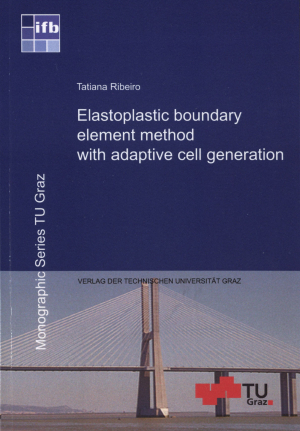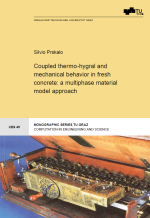The boundary element method is applied to the analysis of elasto-plastic problems. Basic concepts of plasticity theory and the boundary integral equations for elastoplastic analysis are reviewed. The numerical implementation of the boundary element method for elasto-plastic analysis currently in use is discussed. In this approach the domain has to be discretized into cells in order to take in account the influence of the plastic strains or stresses. This requires more effort for the discretization of the problem and a high computational effort.
A new technique is proposed for the analysis of 2D and 3D non-linear problems with the boundary element method. In this approach the domain does not need to be discretized prior to the analysis. Plasticity is assumed to start from the boundary and the cells are generated from the boundary data automatically during the analysis.
Using the cell generation process, non-linear analysis with the boundary element method is much more efficient than the standard approach with a pre-definition of the domain discretization. The accuracy of the solution obtained using the new approach is validated in some numerical examples.
Ausgabe: kartoniert
ISBN: 978-3-902465-55-9
Umfang: 178 Seiten
Sprache: Englisch
Erschienen: Dezember 2007
Reihe: Monographic Series TU Graz / Structural Analysis
Vergriffen!
The boundary element method is applied to the analysis of elasto-plastic problems. Basic concepts of plasticity theory and the boundary integral equations for elastoplastic analysis are reviewed. The numerical implementation of the boundary element method for elasto-plastic analysis currently in use is discussed. In this approach the domain has to be discretized into cells in order to take in account the influence of the plastic strains or stresses. This requires more effort for the discretization of the problem and a high computational effort.
A new technique is proposed for the analysis of 2D and 3D non-linear problems with the boundary element method. In this approach the domain does not need to be discretized prior to the analysis. Plasticity is assumed to start from the boundary and the cells are generated from the boundary data automatically during the analysis.
Using the cell generation process, non-linear analysis with the boundary element method is much more efficient than the standard approach with a pre-definition of the domain discretization. The accuracy of the solution obtained using the new approach is validated in some numerical examples.




